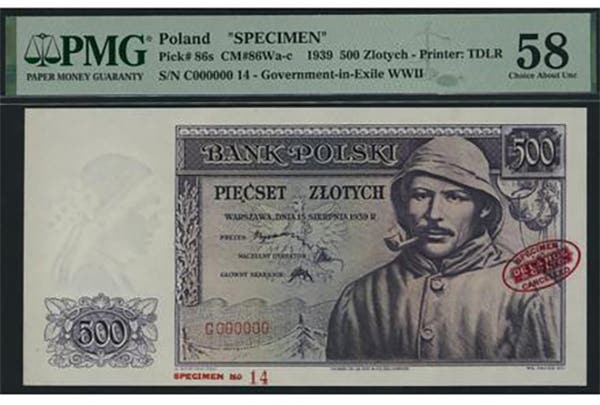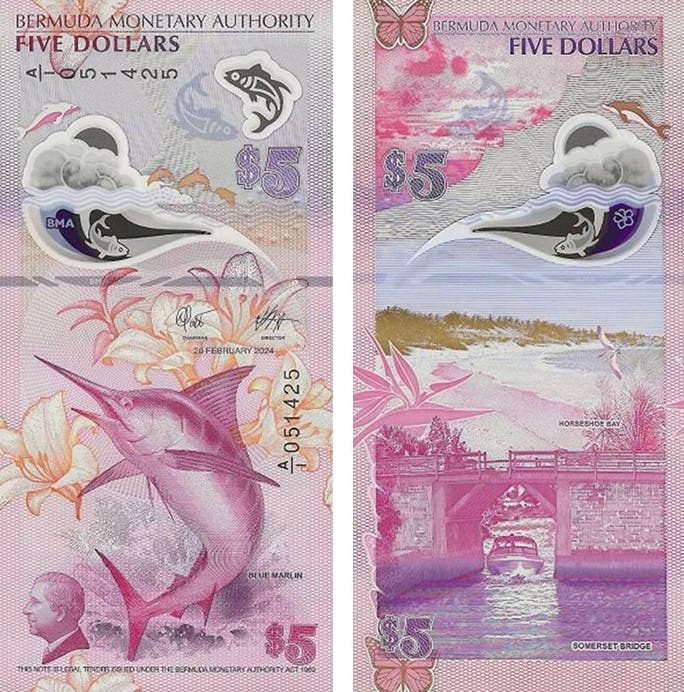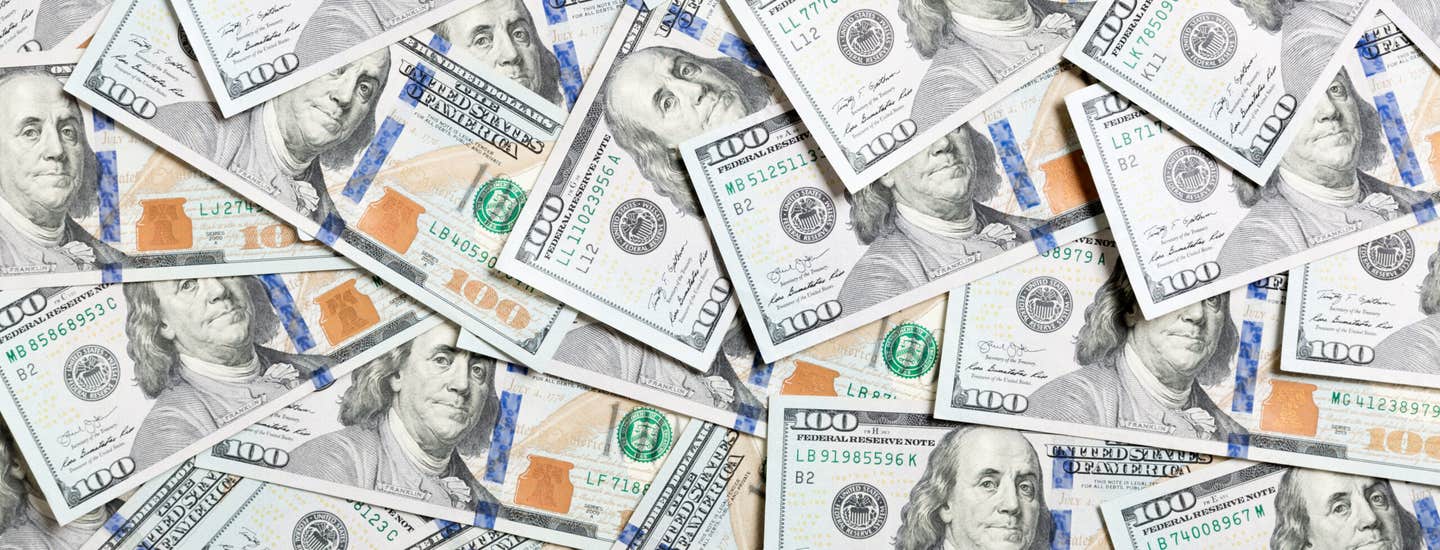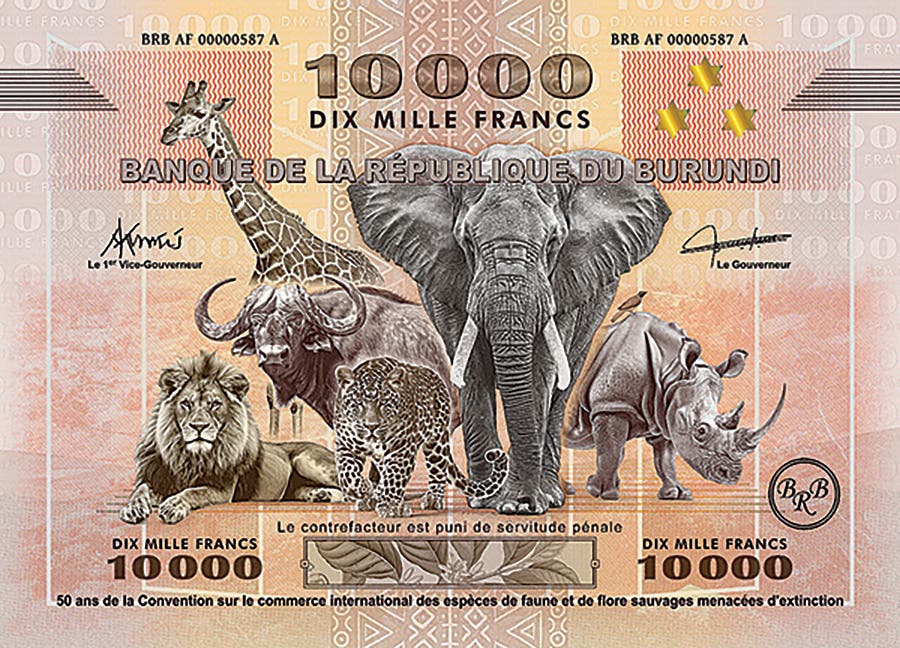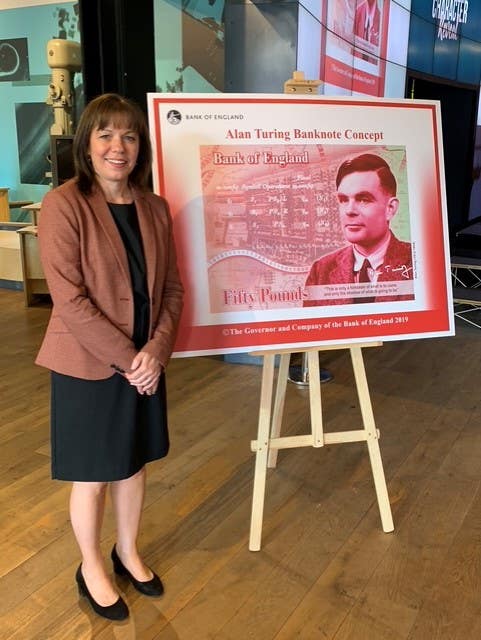Rainbow pound sells for $88,070
The recent sale of an Australian “Rainbow Pound” (P-2a) at Noble Numismatics’ August sale in Sydney was a noteworthy event. The lot realized U.S.$88,070 [Australia $121,635], making it the top-priced…
The recent sale of an Australian “Rainbow Pound” (P-2a) at Noble Numismatics’ August sale in Sydney was a noteworthy event. The lot realized U.S.$88,070 [Australia $121,635], making it the top-priced item in the remarkable Caldwell collection of Australian bank notes. Oddly, it failed to get a mention in the auction catalog’s preface describing the collection.
The short-lived rainbow notes occupy an historically important niche in the history of Australian paper money. Among other matters, they are directly linked to World War I, although this matter is sometimes overlooked in auction catalog descriptions. But there is more to these intriguing notes than WWI having been responsible for their issue.
The Commonwealth of Australia introduced its first notes following the passing of the Australian Notes Act in 1910. This assigned responsibility for bank note issues to the Commonwealth Treasury. It also made it an offense for any bank to circulate notes issued by an Aussie state and slapped a 10 percent tax on the notes issued by private banks, thereby forcing them out of circulation.
Prior to the Treasury printing its own notes, it purchased unissued note forms from the trading banks and overprinted them to circulate as Australian bank notes (P-A72 to P-A137). The first distinctive Commonwealth issues appeared in 1913.
The following year war broke out in Europe, and Australia, as part of the British Empire, was immediately involved. The Australian public responded by hoarding gold and silver. Paper money became the circulating currency of choice, but there was insufficient quantity to meet demand. This situation was exacerbated by the government requiring large amounts of folding money to help fund federal works.
As the Note Printing Branch lacked the equipment to increase its throughput, The Treasury responded by producing two types of emergency pounds (P-1B & P-2). Both new notes were required immediately, if not yesterday. The one of concern here is commonly known as the Rainbow Pound (P-2). The Treasury referred to it as the Second Emergency Pound.
These 136x62mm notes were designed and printed at exceedingly short notice by the Government Printing Office using basic technology while supervised by the Australian Note Printer.
Time constraints did not allow any special security features to be incorporated in the notes’ production. For example, it was not possible to engrave conventional steel printing plates, as this would have taken several months. Further, the paper used was not designed for bank note production. It was standard stock as indicated by the various partial watermarks reported among existing notes. It is evident that, from the beginning, these notes were conceived as a stop-gap measure with an early withdrawal planned.
The first printing was completed on Oct. 3, 1914. A second printing ran from Oct. 20 to Feb. 12, 1915. The printed notes were sold to banks between November 1914 and April 1915.
The underprint of the note’s face consists of an orange vertical strip occupying about a third of the note, flanked by a light blue strip on either side. Where the orange and blue meet, the color tends to green. This color scheme extends across and through a large ONE that dominates the note’s center such that the left of the “O” and right of the “E” are green. All of which explains the popular name Rainbow Pound.
A black cursive script overprint states: “Australian Note / The Treasurer of the Commonwealth of Australia promises to pay the Bearer / in gold coin on demand at the Commonwealth Treasury / at the seat of government.” The note is signed by Jas. R. Collins, Assistant Secretary, and Geo. T. Allen, Secretary to the Treasury.
The back shows the words ONE POUND at the center enclosed in various geometric lathe-work patterns. The underprint is mauve at the center, grading to orange at either side.
It is understood 4 million notes were printed but only 2.5 million issued. Serial numbers ranged through C 000001 C to F 1000000 F. The C-C and D-D notes (P-2a) show a ‘No.’ between the prefix and the serial number. The E-E and F-F issues (P-2b) do not.
The lack of security features saw these notes immediately and widely counterfeited in every Australian state. On April 17, 1915, the Commonwealth Treasurer asked the banks to withdraw them all as quietly as possible and return them to the Treasury or its Note Agencies. In the meantime, the banks were asked to use higher denominations wherever possible until a greater issue of regular pounds became available.
As of Oct. 24, 1924, the number of rainbow notes unaccounted for was 9,111.
That sold by Noble’s was on the market for the first time in 28 years. It had a solid provenance: ex Spink Australia, sold privately to Amon Carter in 1977, and then to Mel Steinberg.
It was acquired by Caldwell via a private purchase from John Pettit in 1990 for $15,205.
It came graded gEF with a light center fold, a pin hole at top left, and slightly faded and toned. Numbers had been penciled on the back. A major factor in the $88,070 price was the serial number: D No. 000001 D. That price can be compared with current catalog values for regular D-D notes in EF grade. These are: The Standard Catalog of World Coins U.S.$100,000 [AUD134,645], MacDonald’s $61,545 [AUD85,000] and Renniks $65,166 [AUD90,000].
This article was originally printed in Bank Note Reporter. >> Subscribe today.
More Collecting Resources
• Order the Standard Catalog of World Paper Money, General Issues to learn about circulating paper money from 14th century China to the mid 20th century.
• With over 25,000 listings and 15,500 illustrations, the Standard Catalog of World Paper Money, Modern Issues is your go-to guide for modern bank notes.



